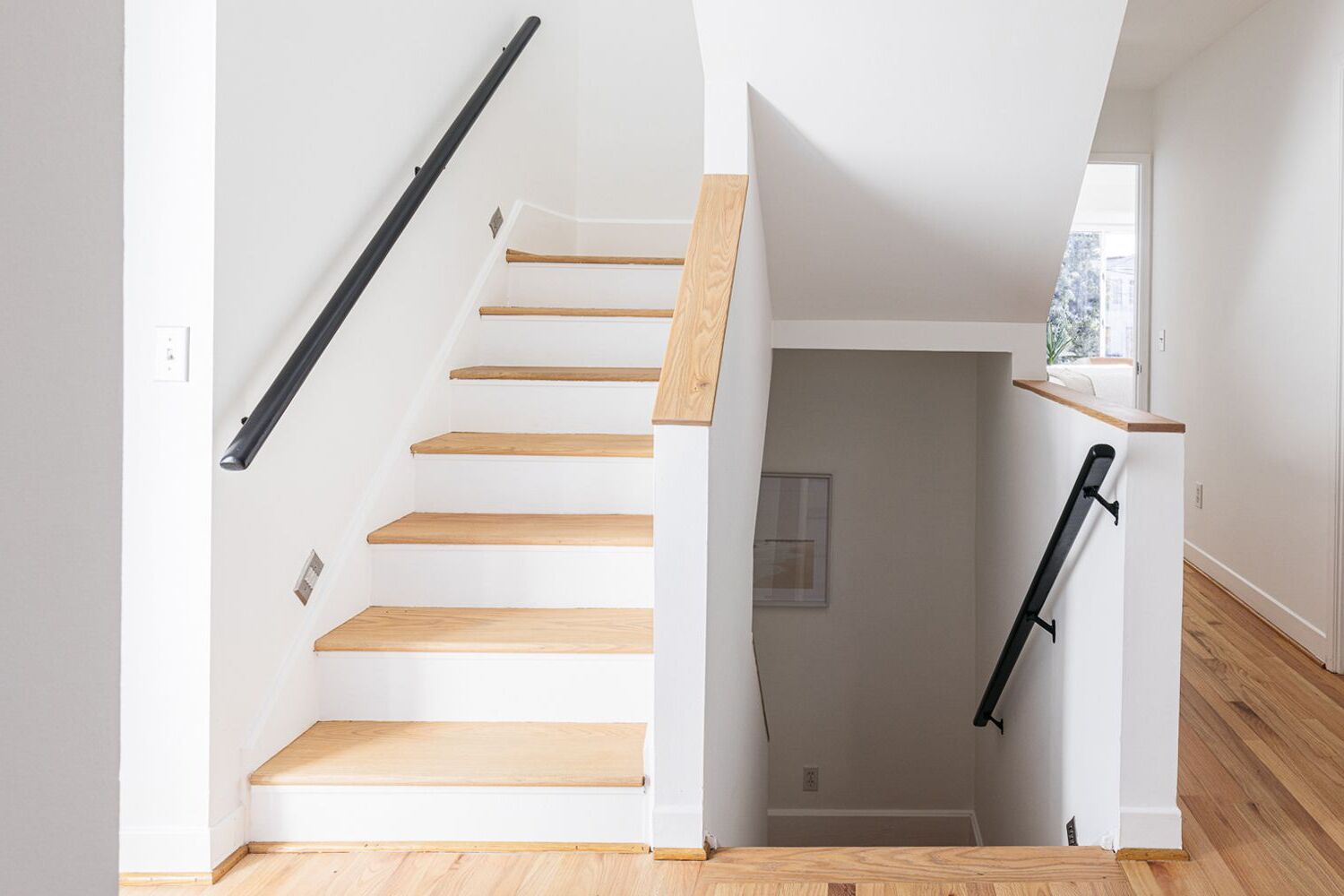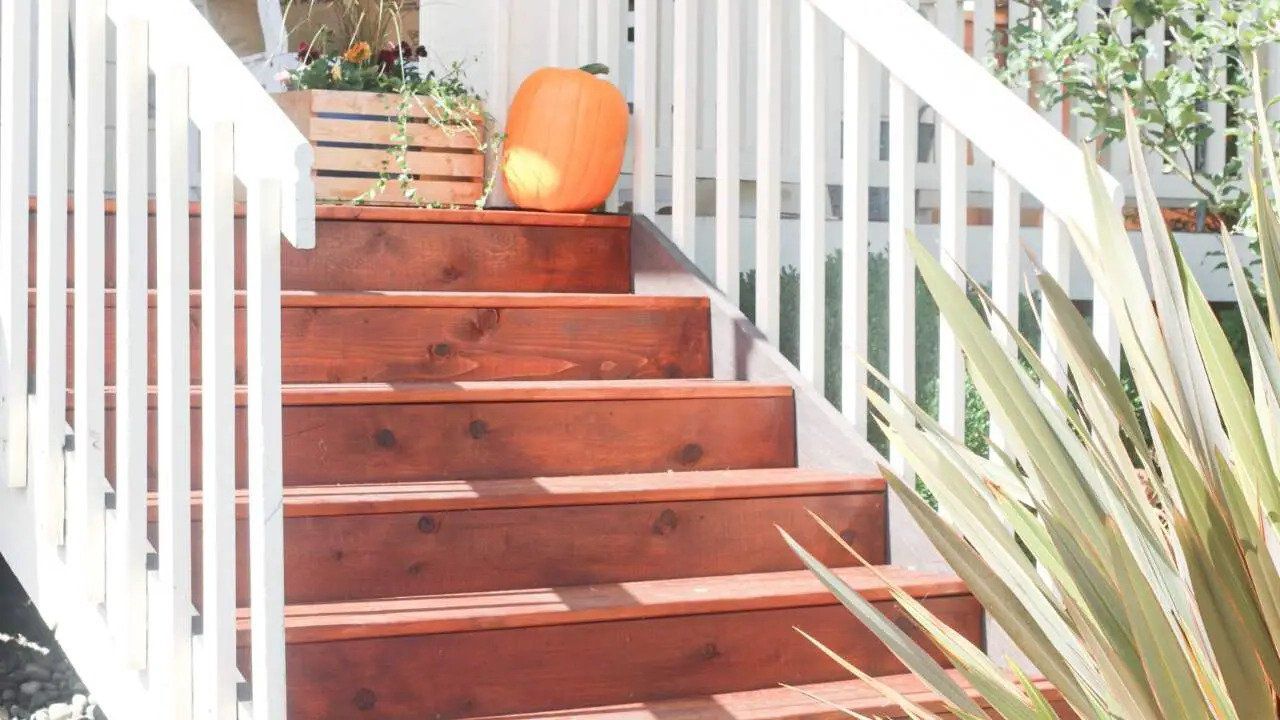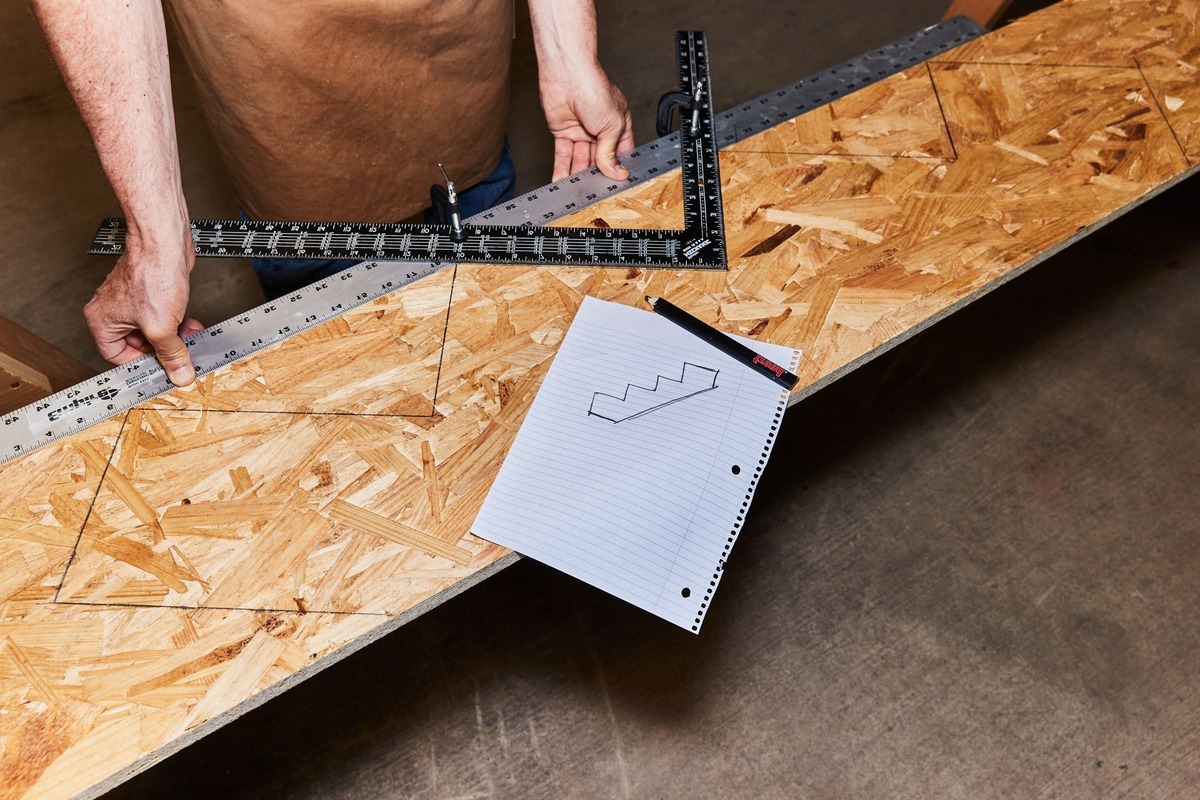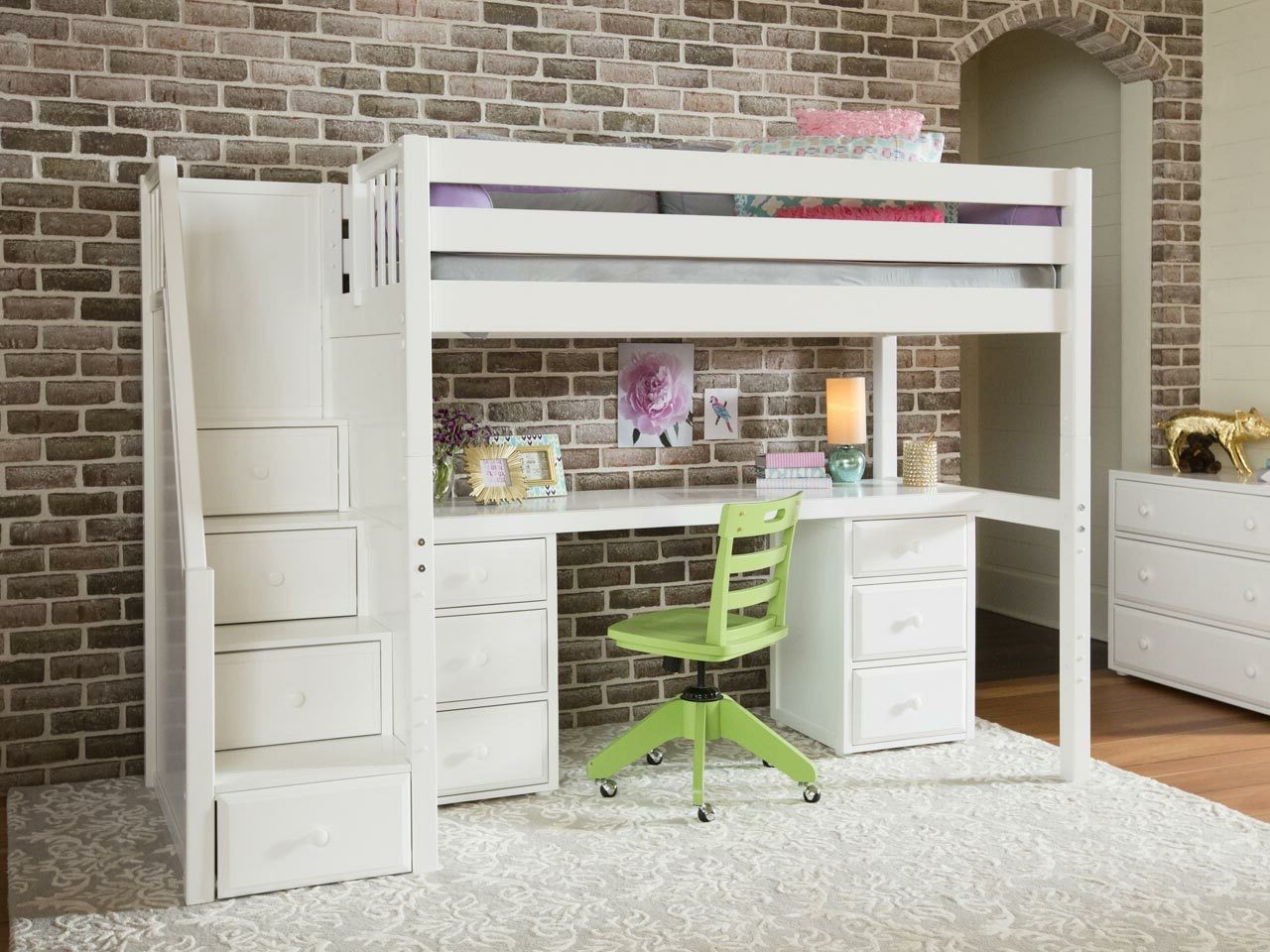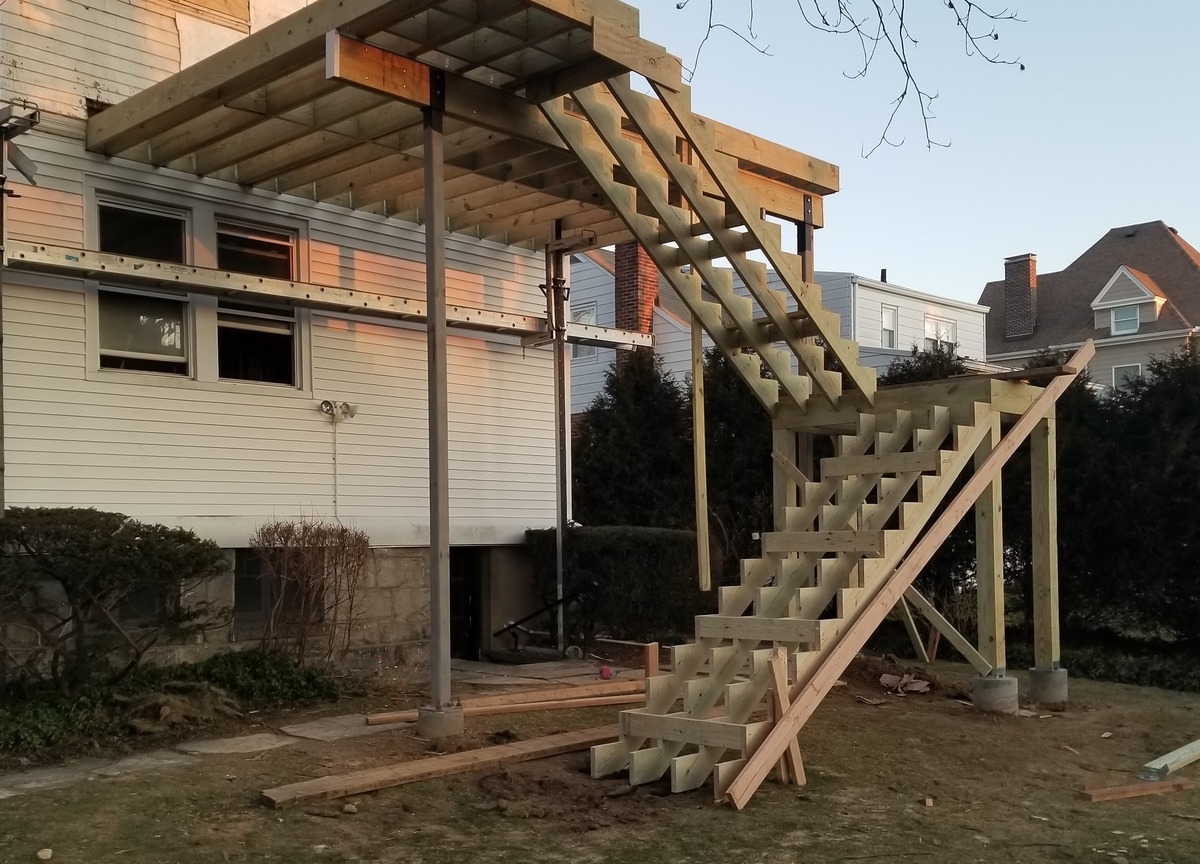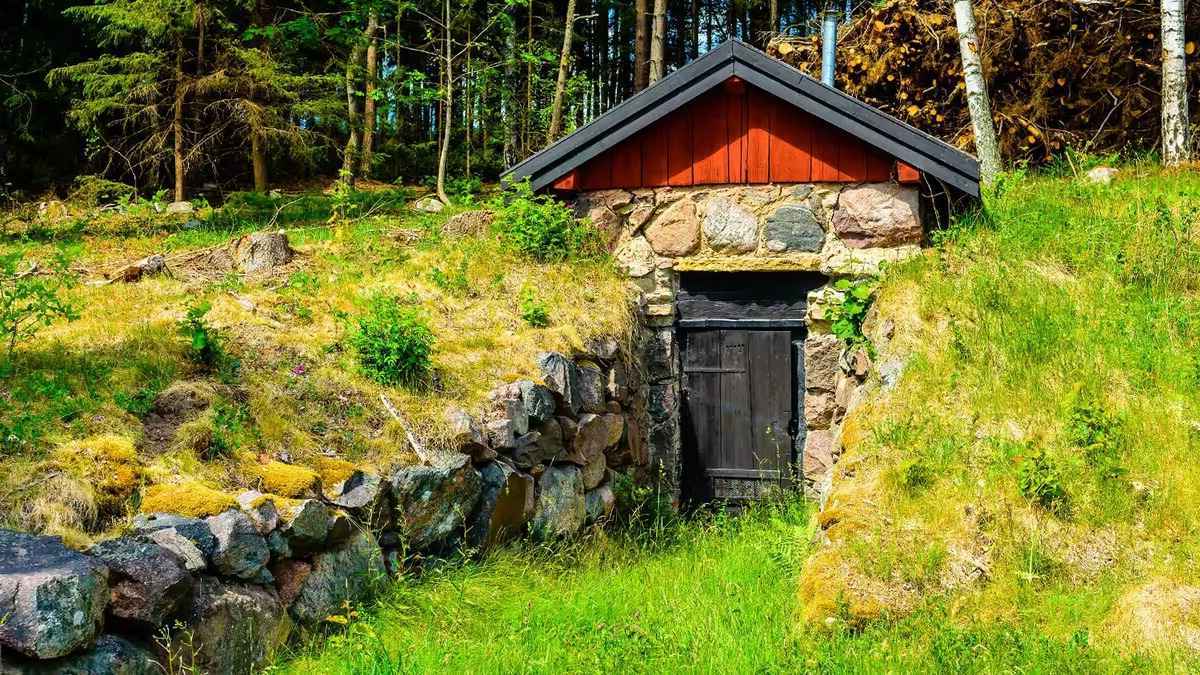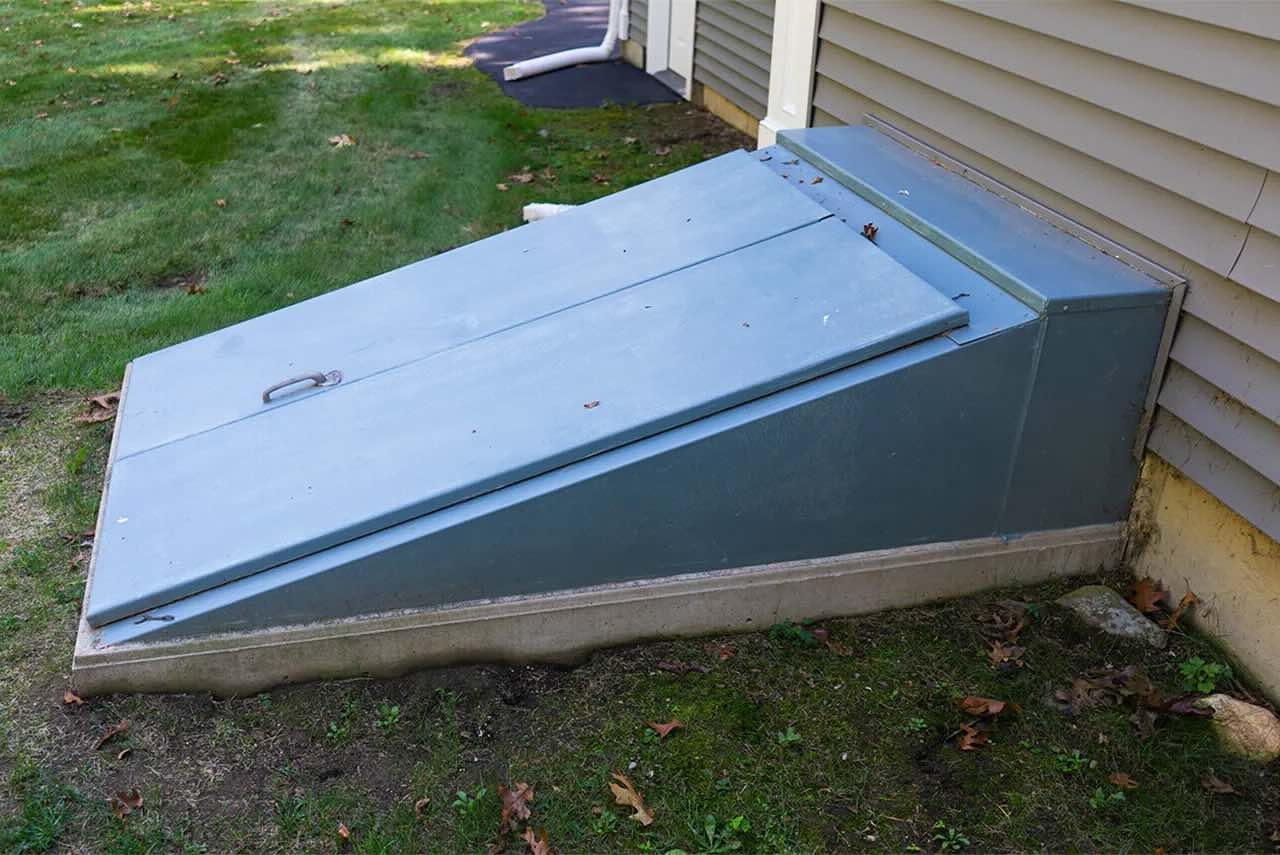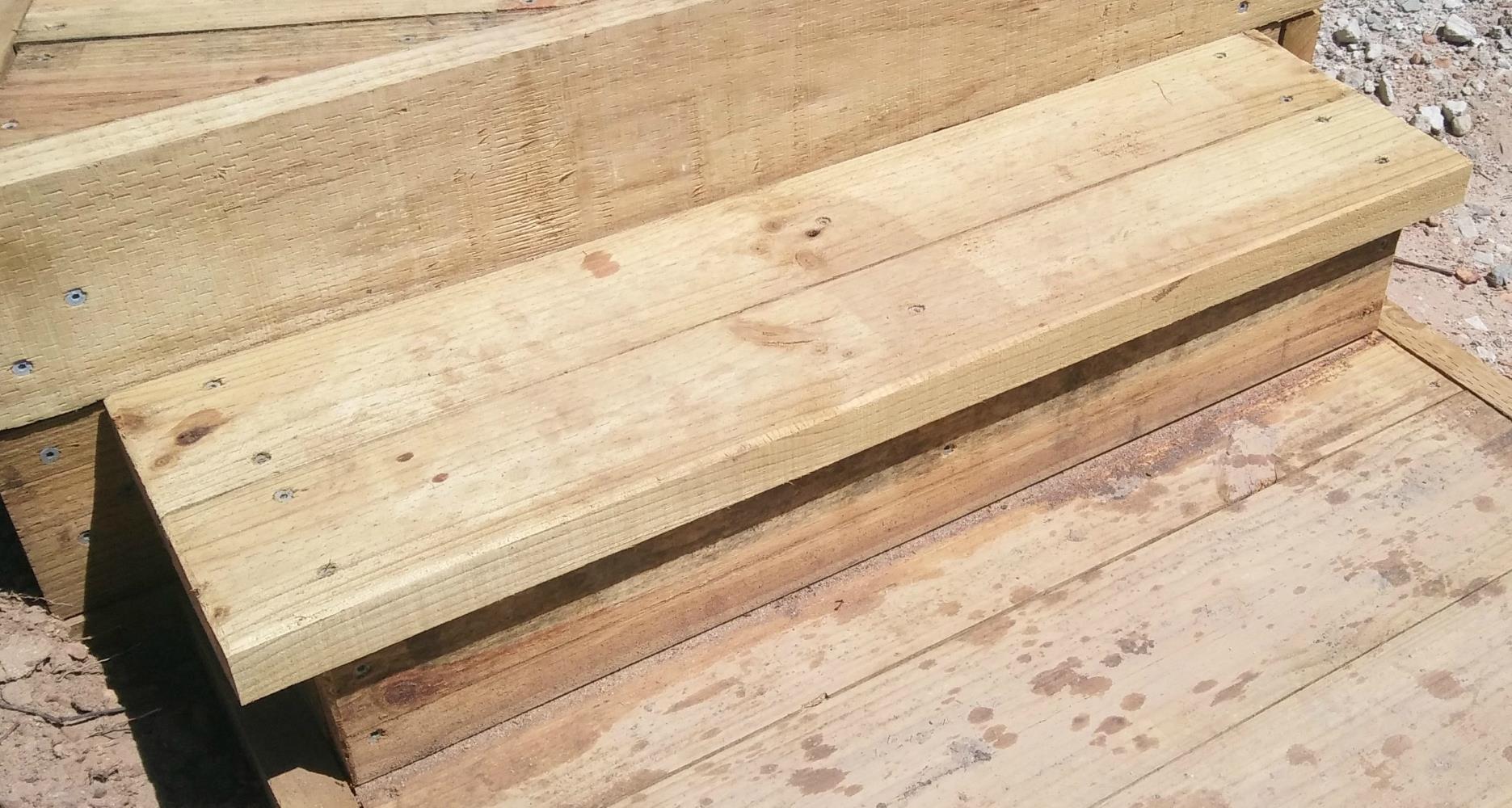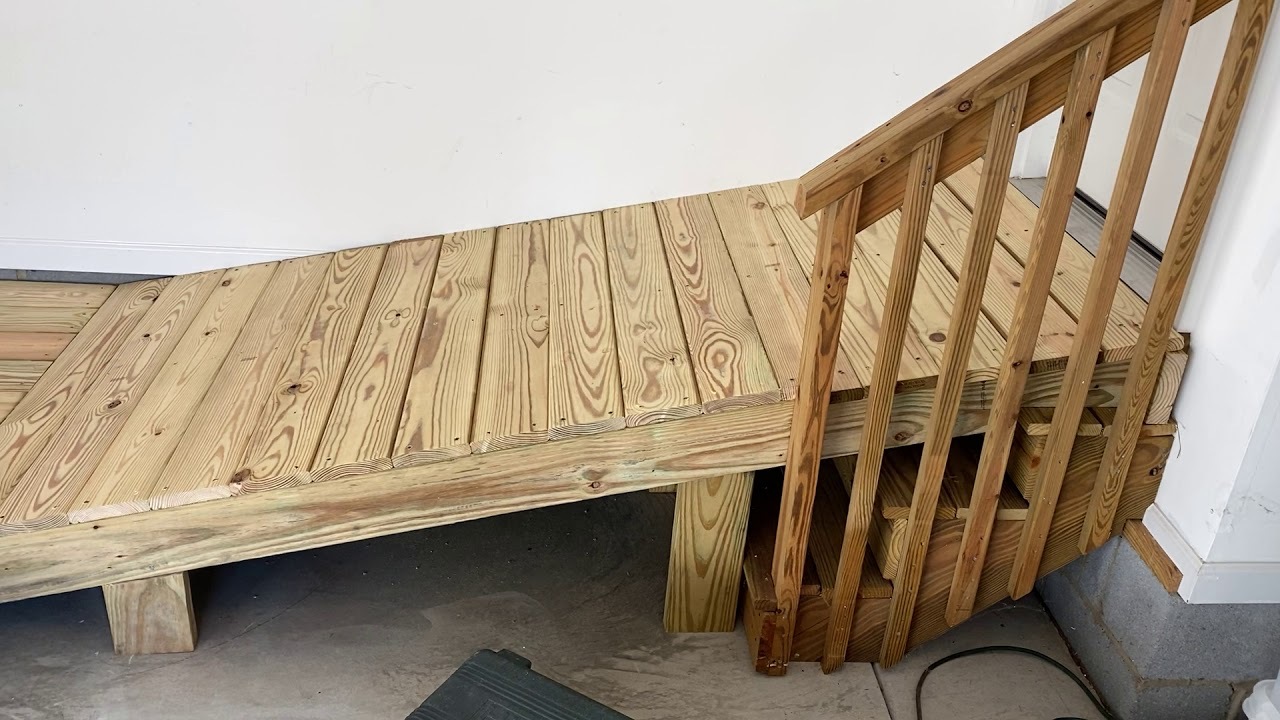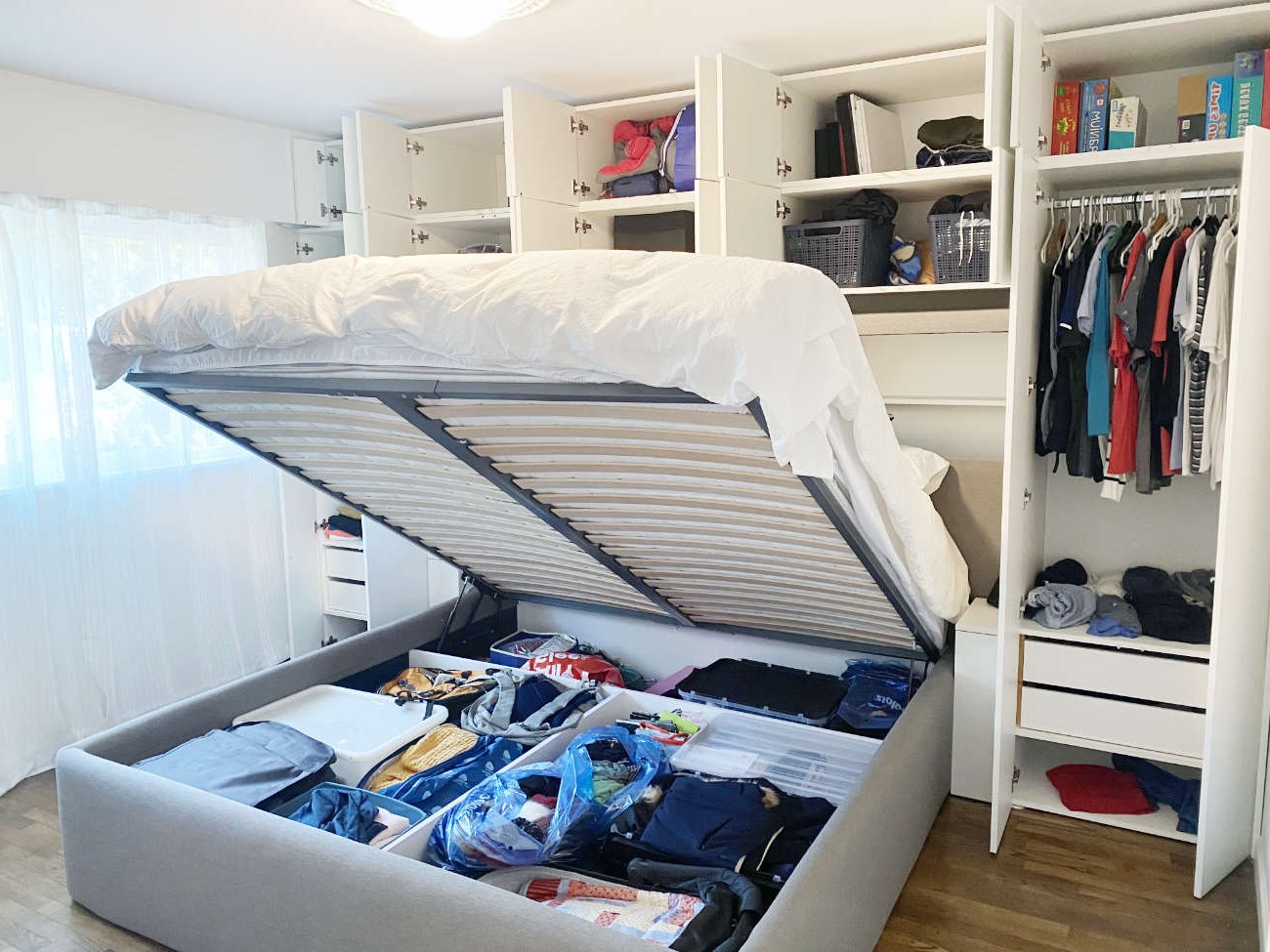Home>Create & Decorate>DIY & Crafts>How To Build A Wine Cellar Under The Stairs
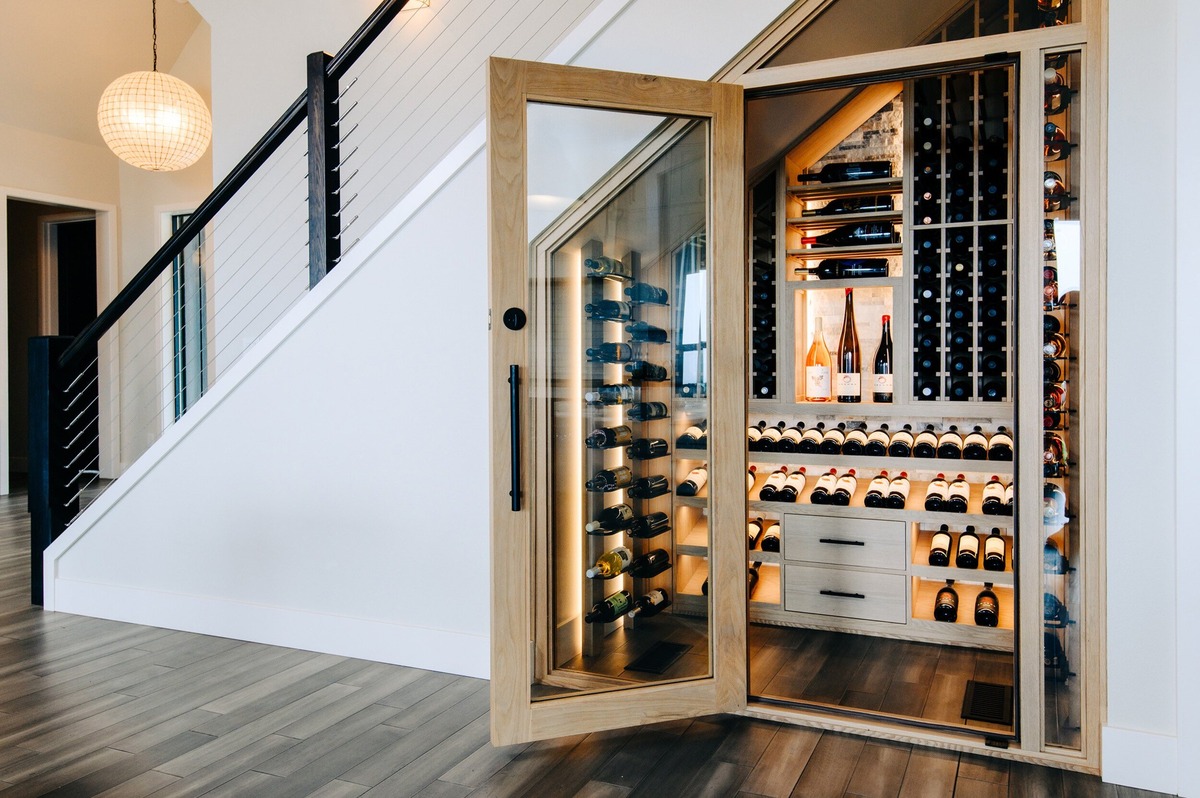

DIY & Crafts
How To Build A Wine Cellar Under The Stairs
Published: June 11, 2024

Senior Editor in Create & Decorate, Kathryn combines traditional craftsmanship with contemporary trends. Her background in textile design and commitment to sustainable crafts inspire both content and community.
Learn how to create a stylish DIY wine cellar under the stairs with our step-by-step guide. Perfect for wine enthusiasts and crafty individuals.
(Many of the links in this article redirect to a specific reviewed product. Your purchase of these products through affiliate links helps to generate commission for Twigandthistle.com, at no extra cost. Learn more)
Introduction
So, you've got some extra space under your stairs and you're thinking, "What can I do with this?" Well, how about turning it into a wine cellar? It's a perfect way to make use of that often neglected area and create a stylish and functional addition to your home. In this article, we'll guide you through the process of building your very own wine cellar under the stairs. Whether you're a wine enthusiast or just looking for a unique home improvement project, this is a great way to add value and charm to your home. Let's get started!
Read more: How to Build a DIY Closet Wine Cellar
Assessing the Space Under the Stairs
Before diving into the construction of your wine cellar, it's crucial to assess the space under your stairs. Here's what you need to consider:
-
Measurements: Take precise measurements of the area to determine the available space for your wine cellar. Consider the height, width, and depth of the space to ensure it can accommodate the wine racks and provide enough headroom for easy access.
-
Accessibility: Evaluate how easily you can access the space. Ensure there's enough room to move around comfortably and that the cellar can be easily opened and closed without any obstructions.
-
Ventilation: Check the ventilation in the area. Proper airflow is essential for a wine cellar to maintain the ideal conditions for wine storage. If ventilation is lacking, you may need to incorporate a ventilation system into your design.
-
Structural Integrity: Assess the structural integrity of the space. Ensure that the area under the stairs can support the weight of the wine racks, bottles, and any additional features you plan to include.
By thoroughly assessing the space under the stairs, you can effectively plan the layout and design of your wine cellar, ensuring that it meets both your practical and aesthetic needs.
Planning and Designing the Wine Cellar
When it comes to planning and designing your wine cellar, there are several key considerations to keep in mind. Here's how to approach this crucial phase of the project:
-
Wine Cellar Layout: Determine the layout of your wine cellar based on the available space and your storage needs. Consider whether you want a compact, functional cellar or a more expansive display area for your wine collection.
-
Storage Capacity: Assess the quantity of wine bottles you intend to store. This will influence the size and number of wine racks you'll need. Factor in both current and future storage needs to ensure your cellar remains practical as your collection grows.
-
Aesthetic Appeal: Think about the overall aesthetic you want to achieve. Consider incorporating design elements such as ambient lighting, decorative features, and a cohesive color scheme to create an inviting and visually appealing space.
-
Accessibility: Plan for easy access to your wine bottles. Ensure that the layout allows for convenient retrieval and organization of your collection. Consider incorporating sliding or pull-out racks for accessibility in tight spaces.
-
Climate Control: Research and plan for the climate control system that will maintain the ideal temperature and humidity levels for wine storage. This may involve consulting with a professional to ensure the cellar environment is suitable for preserving your wine.
-
Safety and Security: Consider safety measures such as securing the cellar door to prevent unauthorized access, especially if you have young children. Additionally, ensure that the wine racks are securely installed to prevent accidents.
By carefully planning and designing your wine cellar, you can create a space that not only meets your practical storage needs but also enhances the overall ambiance of your home.
Choosing the Right Materials
Selecting the right materials for your wine cellar is crucial to ensure the longevity, functionality, and aesthetic appeal of the space. Here's a breakdown of the essential materials you'll need:
-
Wood: Opt for high-quality, durable wood for constructing the wine racks and shelving. Woods like redwood, mahogany, or cedar are popular choices due to their natural resistance to moisture and decay. These woods also add an elegant touch to the cellar's interior.
-
Metal Racking: Consider incorporating metal wine racks for a modern and sleek look. Stainless steel or wrought iron racks offer durability and a contemporary aesthetic, making them an excellent choice for a more industrial or minimalist design.
-
Insulation and Vapor Barrier: Use insulation materials to regulate the temperature and prevent moisture buildup within the cellar. A vapor barrier, such as a specialized paint or plastic sheeting, helps maintain the ideal humidity levels for wine storage.
-
Flooring: Choose a flooring material that can withstand the cool and damp conditions of a wine cellar. Options like ceramic tile, stone, or vinyl provide durability and are resistant to moisture, making them ideal for cellar flooring.
-
Door and Hardware: Select a sturdy, well-insulated door for the cellar to ensure proper sealing and security. Additionally, opt for quality hardware, such as hinges, handles, and locks, to complement the overall design and provide ease of use.
-
Climate Control System: Invest in a reliable climate control system that includes a cooling unit, humidity regulator, and insulation materials. Ensure that the materials used in the climate control system are of high quality to maintain the optimal conditions for wine storage.
By carefully selecting the right materials, you can create a wine cellar that not only showcases your collection beautifully but also provides a controlled environment for preserving and aging your wines.
Building the Wine Racks
When it comes to building the wine racks for your cellar, there are several approaches you can take, depending on your skill level and design preferences. Here's a step-by-step guide to help you construct sturdy and visually appealing wine racks:
-
Measure and Plan: Begin by measuring the dimensions of the space where the wine racks will be installed. Consider the height, width, and depth available for the racks. With these measurements in mind, sketch out a plan for the layout of the racks, taking into account the number of bottles each rack will hold and any specific design features you want to incorporate.
-
Choose the Right Wood: Select high-quality wood for constructing the wine racks. Redwood, mahogany, or cedar are popular choices due to their durability and natural resistance to moisture. Ensure the wood is properly treated and sealed to withstand the cellar's humidity levels.
-
Cutting and Assembly: Use a saw to cut the wood into pieces according to your measurements. Assemble the pieces to create the individual wine rack sections, ensuring they are securely joined together. Consider using wood glue and screws for added stability.
-
Incorporate Wine Bottle Supports: Determine the spacing and design of the wine bottle supports within the racks. You can opt for individual bottle slots, diamond bins, or other configurations based on your aesthetic preferences and the types of wine bottles you plan to store.
-
Sand and Finish: Once the racks are assembled, sand the surfaces to achieve a smooth finish. Apply a wood finish or stain of your choice to enhance the appearance of the racks and provide additional protection against moisture.
-
Install the Wine Racks: Carefully install the completed wine racks in the designated area of the cellar. Use a level to ensure the racks are straight and evenly spaced. Secure the racks to the walls or flooring as needed to prevent any movement or instability.
By following these steps, you can create custom wine racks that not only fit seamlessly into your cellar space but also provide a safe and attractive storage solution for your wine collection.
Read more: How to Build a Wine Cellar in Your Basement
Installing Climate Control and Lighting
Proper climate control and lighting are essential elements of a well-functioning wine cellar. Here's a detailed guide on how to install climate control and lighting to ensure the optimal storage conditions for your wine collection:
Climate Control System
-
Assess Your Needs: Determine the size of your wine cellar and the climate requirements for storing wine. Consider factors such as insulation, external temperature fluctuations, and the types of wine you plan to store.
-
Choose the Right Cooling Unit: Select a cooling unit that is specifically designed for wine cellars. Consider factors such as the unit's cooling capacity, energy efficiency, and noise levels. Position the unit in a location that allows for proper air circulation and efficient operation.
-
Humidity Regulation: Install a humidity regulator to maintain the ideal moisture levels within the cellar. This is crucial for preventing cork drying and maintaining the integrity of the wine. Consider using a humidifier or dehumidifier as needed to achieve the optimal humidity range.
-
Insulation and Sealing: Ensure that the cellar is well-insulated to prevent temperature fluctuations and maintain a consistent environment. Use insulation materials to seal any gaps or areas where heat transfer may occur. Additionally, install a vapor barrier to control moisture levels and prevent condensation.
-
Professional Installation: If you're unsure about the technical aspects of installing a climate control system, consider consulting with a professional HVAC technician or wine cellar specialist. Proper installation is crucial for the long-term functionality and efficiency of the system.
Lighting Design
-
Consider LED Lighting: LED lights are a popular choice for wine cellars due to their low heat emission and energy efficiency. They also provide a clear, natural light that showcases the wine bottles without causing any damage to the wine or labels.
-
Placement and Coverage: Plan the placement of the lights to ensure even coverage throughout the cellar. Avoid direct exposure of the lights to the wine bottles, as this can cause temperature variations and potential damage to the wine.
-
Dimmer Switches: Install dimmer switches to control the intensity of the lighting. This allows you to adjust the ambiance of the cellar and create different lighting effects for various occasions.
-
Accent Lighting: Consider incorporating accent lighting to highlight specific areas of the cellar, such as display shelves or decorative features. This adds visual interest and enhances the overall aesthetic of the space.
-
Consult a Lighting Specialist: If you're unsure about the best lighting design for your wine cellar, consider seeking advice from a lighting specialist. They can provide recommendations based on the layout of your cellar and your specific lighting preferences.
By carefully installing a climate control system and lighting that meets the specific needs of your wine cellar, you can create an environment that not only preserves your wine collection but also enhances the overall appeal of the space.
Stocking and Organizing Your Wine Collection
Stocking and organizing your wine collection is a crucial step in creating a functional and visually appealing wine cellar. Here's a detailed guide on how to effectively stock and organize your wines:
Inventory Assessment
Begin by taking inventory of your wine collection. Note the different types of wines, vintages, and quantities you have on hand. This assessment will help you determine the storage needs and layout of your wine cellar.
Categorization
Organize your wines into categories based on their type, such as red, white, sparkling, and dessert wines. Additionally, consider categorizing them by region, varietal, or aging potential. This categorization will make it easier to locate specific bottles and create a visually cohesive display.
Labeling and Tracking
Label each wine rack or section with the corresponding wine category or type. Consider using decorative or informative labels to add a personalized touch to the cellar. Additionally, maintain a digital or physical inventory list to track the location and quantity of each wine bottle.
Storage Considerations
Store wines that require aging in a separate section of the cellar, away from bottles intended for immediate consumption. Ensure that the storage conditions, including temperature and humidity, are suitable for each type of wine. Consider investing in wine bottle tags or neck tags to provide additional information about each bottle.
Read more: How To Build A Root Cellar
Display and Accessibility
Arrange your wine bottles in a visually appealing manner, considering factors such as bottle orientation, label visibility, and accessibility. Consider incorporating display shelves or areas for showcasing special or prized bottles. Ensure that frequently accessed wines are easily reachable for convenience.
Organization Tools
Utilize wine racks with adjustable shelves or modular designs to accommodate different bottle sizes and shapes. Consider incorporating storage solutions such as wine crates, bins, or cubbies for organizing smaller or irregularly shaped bottles. Additionally, invest in wine bottle holders or display stands for showcasing select bottles.
Rotation and Maintenance
Regularly rotate your wine bottles to prevent sediment buildup and ensure even aging. Check for any signs of cork damage or leakage, and promptly address any maintenance issues. Keep a record of the wines that need to be consumed within a specific timeframe to maintain their optimal quality.
By following these guidelines, you can effectively stock and organize your wine collection, creating a well-structured and visually appealing wine cellar that enhances the overall enjoyment of your wine experience.
Maintenance and Upkeep of the Wine Cellar
Maintaining and upkeeping your wine cellar is essential to ensure that your wine collection remains in optimal condition. Here's a detailed guide on the key aspects of maintaining and caring for your wine cellar:
Read more: How to Build a Basement Root Cellar
Regular Cleaning and Inspection
Regularly clean the wine cellar to prevent dust buildup and maintain a hygienic environment for your wine bottles. Use a soft, damp cloth to wipe down the wine racks, shelves, and any exposed surfaces. Inspect the cellar for any signs of mold, mildew, or pest infestation, and address any issues promptly to prevent damage to your wines.
Temperature and Humidity Monitoring
Consistently monitor the temperature and humidity levels within the wine cellar to ensure they remain within the ideal range for wine storage. Use a reliable thermometer and hygrometer to track these conditions. Make any necessary adjustments to the climate control system to maintain the optimal environment for your wines.
Wine Rack Maintenance
Regularly inspect the wine racks for any signs of wear, damage, or instability. Ensure that the racks are securely fastened to the walls or flooring and that they can support the weight of the wine bottles. Address any loose or damaged components promptly to prevent accidents or damage to your wine collection.
Cork and Bottle Inspection
Periodically inspect the wine bottles for any signs of cork damage, leakage, or label deterioration. Check for any protruding corks or evidence of seepage, which may indicate a compromised seal. Address any issues with the wine bottles to prevent spoilage and maintain the quality of your wines.
Read more: How To Build Deck Stairs
Lighting and Electrical Maintenance
Inspect the lighting fixtures and electrical components within the wine cellar to ensure they are functioning properly. Replace any burnt-out bulbs or malfunctioning fixtures. Check the wiring and connections to ensure they are safe and secure. Proper lighting maintenance is crucial for showcasing your wine collection and creating a welcoming ambiance.
Security and Access Control
Regularly review the security measures in place to protect your wine cellar. Ensure that the cellar door and any access points are secure and that the wine collection is safeguarded against unauthorized access. Consider installing security features such as locks, alarms, or surveillance systems for added protection.
Wine Inventory Management
Maintain an updated inventory of your wine collection, noting any additions, removals, or changes in storage locations. Keep track of the aging potential and consumption timeline for each wine bottle. This helps you manage your collection effectively and ensures that wines are consumed at their peak quality.
By prioritizing the maintenance and upkeep of your wine cellar, you can preserve the integrity of your wine collection and create a space that continues to enhance your appreciation of fine wines.

